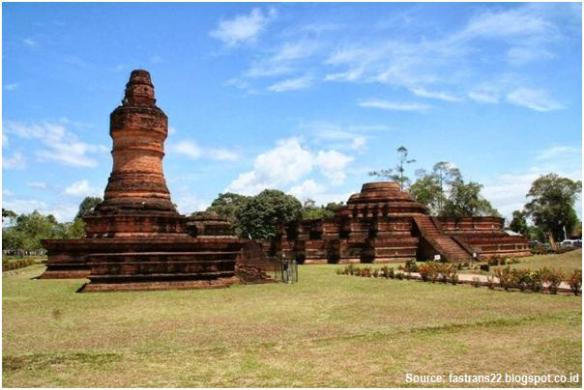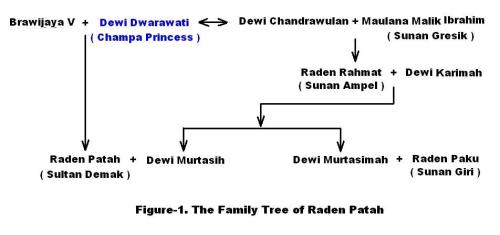The life of Sriwijaya, spanning over 700 years from VII to the XIV century, demonstrates the extreme stability of the kingdom. It rarely encountered serious uprising that might topple down the monarchy, on the contrary to what happened in Java. In the dawn of this period, the kingdom managed to build mighty armadas capable of conquering the surrounding regions. In 688 CE, an expedition was sent to overcome one of its competitors, Tarumanegara Kingdom. Then they occupied Bangka while controlling Sunda Strait, aiming at gaining tax from ships sailing through the strait. However, most foreign ships loaded with valuable products did not harbor at Sriwijaya’s ports but the western part of Kra Isthmus. From there, the merchandise was transported by caravans across the isthmus to Siam Bay in the eastern part of it, then continued to be delivered to other places by boats. In such a way, the traders evaded from paying the tax to the Sriwijaya Kingdom.
Under such circumstances, the kingdom conquered Kedah and Langkasuka (Malaysia) in the VII century, then went north to Dwarawati (Mon) and Indrapura (Khmer), and lastly, Tonkin (South China), Rha Thang and Phan Rang (Champa) that took place in VIII century. As such, Sriwijaya gained full control over Kra Isthmus, for which its naval troops could force foreign ships to sail passing through Malaka Strait and Bangka Strait. By doing so, the Southeast Asia sailing route was strictly under control, and the kingdom could collect big profits from tax. The nation enhanced diplomatic ties with India and China, the two countries, avoiding their challenge towards Sriwijaya maritime supremacy.
As the conqueror of those surrounding countries, Sriwijaya was flourished and became a sizeable Buddhist center in the Far East. Many great gurus from India and China, such as Dharmapala, Sakyakitri, and I-tsing, taught students coming from the surrounding regions. I-tsing, who was a good reporter, stayed in the country in 671 CE both as a teacher and scholar deepening his Buddhism knowledge.
The kingdom enhanced the internal security by enforcing penal codes, and punished criminals severely according to regulations stated in inscriptions. Noted figures always taught people that gods would punish them first before the kingdom would do next. Epigraphic Monuments of Karang Berahi and Telaga Batu disclosed that god punished anybody who made lethal crimes against the empire.
 Many epigraphic monuments erected in those periods witnessing momentous events among others in Tlang Tuo, Kedukan Bukit, Telaga Batu, Karang Berahi, Kota Kapur, Palas Pasemah, Bukit Siguntang, Amoghapasha, Ligor, Katon, Nalanda, and Grahi.
Many epigraphic monuments erected in those periods witnessing momentous events among others in Tlang Tuo, Kedukan Bukit, Telaga Batu, Karang Berahi, Kota Kapur, Palas Pasemah, Bukit Siguntang, Amoghapasha, Ligor, Katon, Nalanda, and Grahi.
The Kedukan Bukit Epigraphy, issued in 605 Saka (683 CE), commemorates the inauguration of the first king, Dapunta Hyang Sri Jayanasa, at the capital of the kingdom at Musi River bank near Palembang. Those monuments also witness the jurisdiction vastness of Sriwijaya and the trading coverage of various merchandises such as camphor, elephant ivories, perfume, rhinoceros horns, fruits, and cotton traded inter-insularly as well as exported to multiple regions far-and-wide.
During the reign of King Sri Sudamaniwarmadewa, the kingdom had experienced an attack from King Darmawangsa from East Java. However, the soldiers of Sriwijaya successfully thwarted the attack. The frequent invasion of the Cholamandala Kingdom, located in South India, started looming the decline of the empire. The development of Islam in Java accelerated its downfall. By 1225 Melayu-Jambi arose as a new power in South Sumatra and gave the final blow to Sriwijaya though it still existed until the end of the XIV century. The existence of Sriwijaya had been forgotten for centuries before a French historian, George Cœdès, published his research in 1918.








